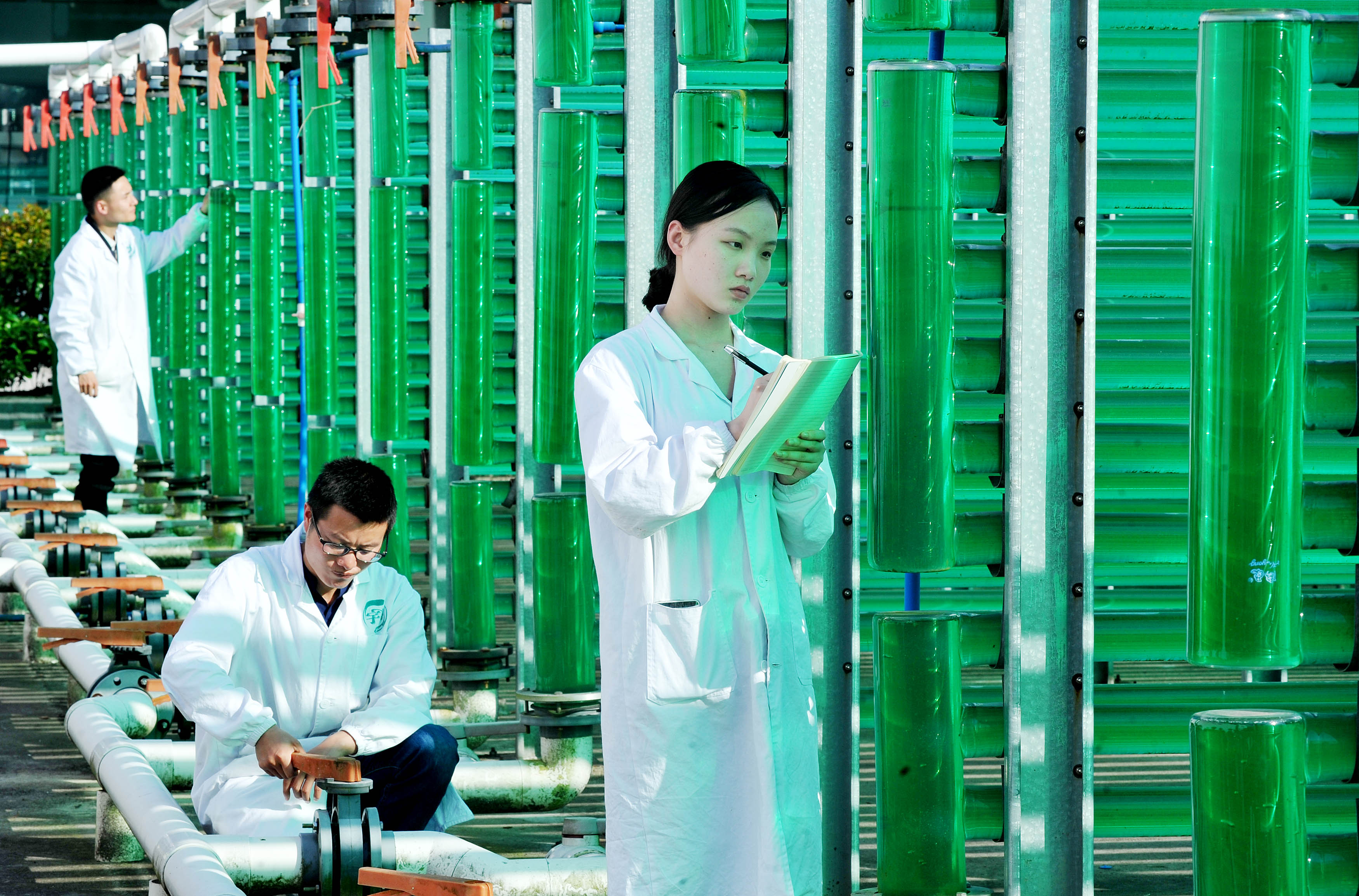New Economy Index Slides to Three-Month Low

The contribution of biotechnology, new-energy vehicles and other value-added sectors to China’s overall economy fell to a three-month low in September, the latest Mastercard Caixin BBD China New Economy Index (NEI) released Monday shows.
The private NEI aims to track the size and change in China’s nascent industries using big data.
The NEI shows that new economy industries accounted for 29.6% of total economic inputs used to make goods and services last month, down from 33.3% in August and 31.5% in July. The index measures labor, capital and technology inputs in 10 emerging industries relative to those used by all industries.
The drop in the September reading was mainly led by a sharp decline in capital input, one of the three subindexes of the NEI. The labor input also went down, but only marginally, while the technology input jumped robustly, according to the report compiled by Caixin Insight Group, the financial data and analysis platform of Caixin Media, and big-data research firm BBD, in collaboration with the National Development School of Peking University. The index is sponsored by global payments service provider Mastercard.
The NEI, launched in March 2016, defines a “new economy” industry as one that is labor and technology intensive but has a relatively low ratio of fixed capital, has sustainable and rapid growth, and is one of the strategic new industries encouraged by the government. The industries included in the index are: energy conservation and environmental protection, new energy, new-energy vehicles, advanced materials, new information technology (IT) and information services, high-tech services and research and development, biotechnology, financial and legal services, advanced equipment manufacturing, and culture, sports and entertainment.
Capital investment experienced wide fluctuations over the past six months, and dove to 24.6 in September from 38.9 in August, snapping a three-month gaining streak. The subindex accounts for 35% of the NEI.
The slump in capital investment came after the growth of urban fixed-asset investment, which measures spending in areas like factories and highways, weakened to its slowest pace in almost 18 years in the first eight months of the year, the latest government figures showed.
Liquidity in China’s interbank market, which oils the wheels of the financial system and is the main source of funding for banks and financial institutions, was tight in September as the central bank continued its deleveraging campaign and made it more difficult for institutions to use borrowed money to speculate.
Other seasonal factors such as tax payments, quarter-end Macro Prudential Assessment tests on the banks, and rising demand for cash ahead of the week-long National Day public holiday that started on Sunday, also put pressure on the availability of funding.
The labor input subindex, which has a weighting of 40% in the NEI, edged down to 29.8 last month from 30.3 in August, the index showed.
The technology input subindex, which gauges the number of scientific research personnel recruited by the tracked industries and the number of inventions and patents they obtained, increased to 36.3 from 30.2 in the previous month, cushioning the decline in the headline number. The subindex accounts for 25% of the NEI.
The New IT industry remained the top contributor among the 10 major industrial categories, making up 9.1 percentage points of the NEI reading last month, down from 9.8 percentage points in August and 12.2 percentage points in July. It was the second-straight month the share of the sector has dropped.
New Energy was second, contributing 4.9 percentage points. Advanced Equipment Manufacturing made the third-biggest contribution of 3.4 percentage points.
The average monthly entry-level salary in new economy sectors, based on data compiled from online career and recruitment websites, rose 2% from August to 9,500 yuan ($1,428) in July and enjoyed a premium of 10% over entry-level salaries in the economy as a whole. But hiring in new economy sectors fell to 28.4% of total hiring in the economy in July from 29.4% the previous month.
Contact reporter Fran Wang (fangwang@caixin.com)

- 1China Moves to Tighten Air-Quality Standards as Beijing Reports Best-Ever Skies
- 2China Threatens EU After Carbon Border Tax Takes Effect
- 3Gansu Ex-Vice Governor Jailed 15 Years for Bribery, Insider Trading
- 4 Exclusive: Wingtech Chair Vows to Regain Control of Nexperia After 100-Day Standoff
- 5Cover Story: How Resource Nationalism Is Redrawing the Global Mineral Playbook
- 1Power To The People: Pintec Serves A Booming Consumer Class
- 2Largest hotel group in Europe accepts UnionPay
- 3UnionPay mobile QuickPass debuts in Hong Kong
- 4UnionPay International launches premium catering privilege U Dining Collection
- 5UnionPay International’s U Plan has covered over 1600 stores overseas






